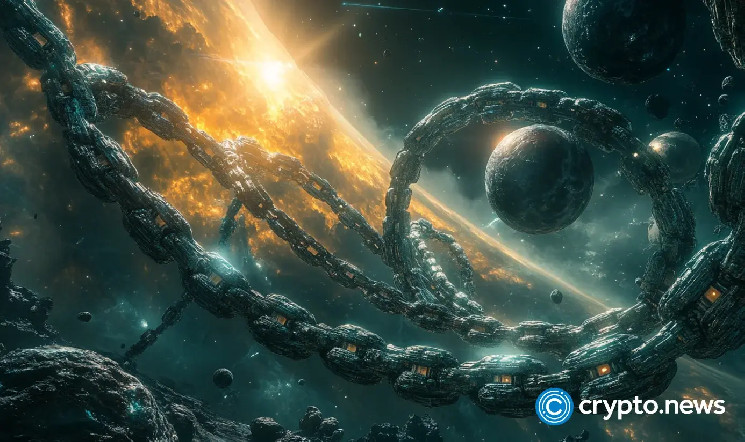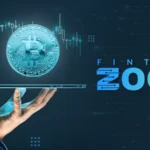Disclosure: The opinions and opinions expressed right here belong to the authors solely and don’t characterize the views or opinions of the crypto.information editorial.
Think about a world the place each nation has its personal web. For France, one for Japan, one for the US, and nobody may speak to one another. Your e mail won’t be despatched throughout borders, social media is restricted to your nation and international industrial transactions. Billions of {dollars} of revolutionary goals are caught in walled gardens. That is precisely the place the blockchain is.
You would possibly prefer it too: When AI rewrites historical past, blockchain expertise is a line of protection | Opinion
The Phantasm of Progress that Drives the Innovation Dilemma
Each technological revolution begins with an obsession. How will we push the boundaries of what’s attainable? In blockchain, this usually means sooner transactions, cheaper charges, and better scalability. However historical past teaches us one thing totally different. Improvements hardly ever observe linear paths. As a substitute, expertise restructuring the trade isn’t just increasing. They redefine the very limits that constrain them.
Please use the web. Its early days have been outlined by walled gardens, AOL, Compuserve and Microsoft Community. Every tried to construct its personal ecosystem and captured worth by limiting interoperability. Nonetheless, when the open internet appeared, these walled gardens collapsed. The web was not profitable as a result of the constraint was eliminated. It was profitable as a result of they redefine them – created protocols (HTTP, SMTP, TCP/IP) that enable for seamless communication with out belief.
The blockchain is at the same intersection. The obsession with scalability has resulted in fragmented options (rollups, sidechains, and different layer 1 blockchains) fixing sure issues, however added complexity to the broader ecosystem. However to shortly develop, we overlook one vital issue: connectivity.
Blockchain area was not meant to be a set of walled gardens, however that is what it did. What is the consequence? A handful of vital inefficiencies:
- Unhealthy person expertise: Strive transferring Property from Ethereum (Eth) to Solana (Sol), Bitcoin (BTC), or Cosmos Hub (Atom). It is like assembling IKEA furnishings and not using a handbook.
- Silred Innovation: Builders are constructing unbelievable functions, however many are restricted to a single chain. consequence? Restricted customers, lack of adoption.
- Fragmented fluidity:Defi functions are struggling to work throughout the chain, and liquidity is being destroyed. Customers want to leap over hoops (and a number of wallets) to carry out easy transactions. Due to this fact, everybody sticks to the chain that’s inside their operational consolation zone.
So the true downside is not simply how greatest transactions are scaled or managed per second, but in addition easy methods to rethink the basic constraints that outline the way forward for blockchain.
Vital constraints: Interoperability, not execution
As of 2024, there are over 120 L1 blockchains and dozens of L2 options. In accordance with an Electrical Capital developer report, the variety of lively builders for all blockchain initiatives elevated by 60% in 2023, with new chains and options persevering with to emerge.
Every blockchain has its personal consensus mechanism, its execution setting, and talknics that function at its energy inside a silo. For instance, Ethereum makes use of Ethereum Digital Machine (EVM) and Solidity for Sensible Contract improvement, whereas Solana employs a special structure in languages like Rust. This variety creates a significant barrier to seamless interactions between chains while selling innovation in their very own ecosystems.
Interoperability between chains with such basic variations in coding language, digital machines, and execution paradigms requires extra than simply filling belongings. It means overcoming vital architectural and technical obstacles.

And to unravel these issues, we actually constructed a bridge.
The bridge we constructed and why they proceed to interrupt
Wrapped tokens, liquidity hubs and cross-chain messaging techniques have promised a seamless expertise, however every comes with trade-offs. Safety vulnerabilities. It slows down. A tedious course of.
The bridge in its present kind is like duct tape from leaky pipes. They work – they do not.
Variations in coding languages and the shortage of widespread digital machines improve the price of constructing bridges and integration layers between blockchains. Every time a developer builds a cross-chain bridge or interoperability layer, it’s essential to clarify:
- Language Translation: Conversion between Solidity, Rust, or Bitcoin scripts just isn’t solely time consuming, but in addition error susceptible. In 2023, over 60% of lively blockchain builders have been engaged on interoperability options, spending a mean of 1.5 instances extra time troubleshooting and debugging cross-chain logic than single-chain functions.
- VM compatibility: Filling up EVM and Solana historical past proof or Bitcoin scripts just isn’t simple. This isn’t nearly transferring tokens from one chain to a different, but in addition about guaranteeing that the logic behind a distributed utility is suitable in several execution environments.
- Safety dangers: The extra layers of interoperability you deploy between totally different ecosystems, the extra possible it’s to be susceptible as a result of hackers have extra targets. In accordance with the 2023 Chain Melting Report, Cross-Chain Bridge was accountable for greater than $1 billion in losses because of a safety breach in 2022 alone. The complexity related to guaranteeing that cross-chain interactions are secure can improve the prices of insurance coverage, auditing and steady monitoring. In actual fact, blockchain initiatives now spend a mean of $200,000 per yr on good contract audits and cybersecurity options, ranging from $50,000 simply two years in the past.
Every of those hurdles will increase the price of builders and finally reduces the person expertise because of elevated fuel costs, buying and selling instances, and potential errors or failures in cross-chain functions.
So, what’s the future? As Vitalik Buterin, co-founder of Ethereum, stated:
“The way forward for blockchain is to not be the perfect in a single space, however to be the perfect to work collectively.”
New Psychological Mannequin: Composite builds interoperability
Interoperability is an enabler with a stage of complexity.
Mixture refers back to the capabilities of a variety of blockchain parts, equivalent to good contracts, protocols, and functions, which permit for seamless interplay and creating extra advanced and versatile features. This modular strategy permits builders to construct on present parts, driving innovation and effectivity.
Within the context of blockchain interoperability, complexity permits DAPP to function throughout a number of chains. For instance, Defi functions may leverage liquidity swimming pools from varied blockchains to offer customers with higher charges and extra choices.
As a result of on the finish of the day, if it exists alone, a quick blockchain is ineffective.
Presto. Heading to construct an open freeway.
learn extra: Reviews of Ethereum’s demise are extremely exaggerated | Opinion
Davide Megaldo
Davide Megaldo That is the CCO of Neon EVM. He has been on the forefront of blockchain innovation since late 2013. With 10 years of expertise in blockchain and crypto, his areas of curiosity embody Web3, Defi, Staking and NFT. Davide launched into an entrepreneurial journey in 2015 and based his first startup to permit international charities to simply accept Bitcoin donations. He additionally promoted group involvement and actively participated in native Bitcoin Meetups and crypto conferences in Europe. In 2023, Davide set out on a journey the place Neon Labs leads the industrial and enterprise aspect. He focuses on creating revolutionary enterprise strains, fostering strategic partnerships, and driving the expansion charts for neon EVMs whereas defending progress in each the Solana and Ethereum blockchain ecosystems.











